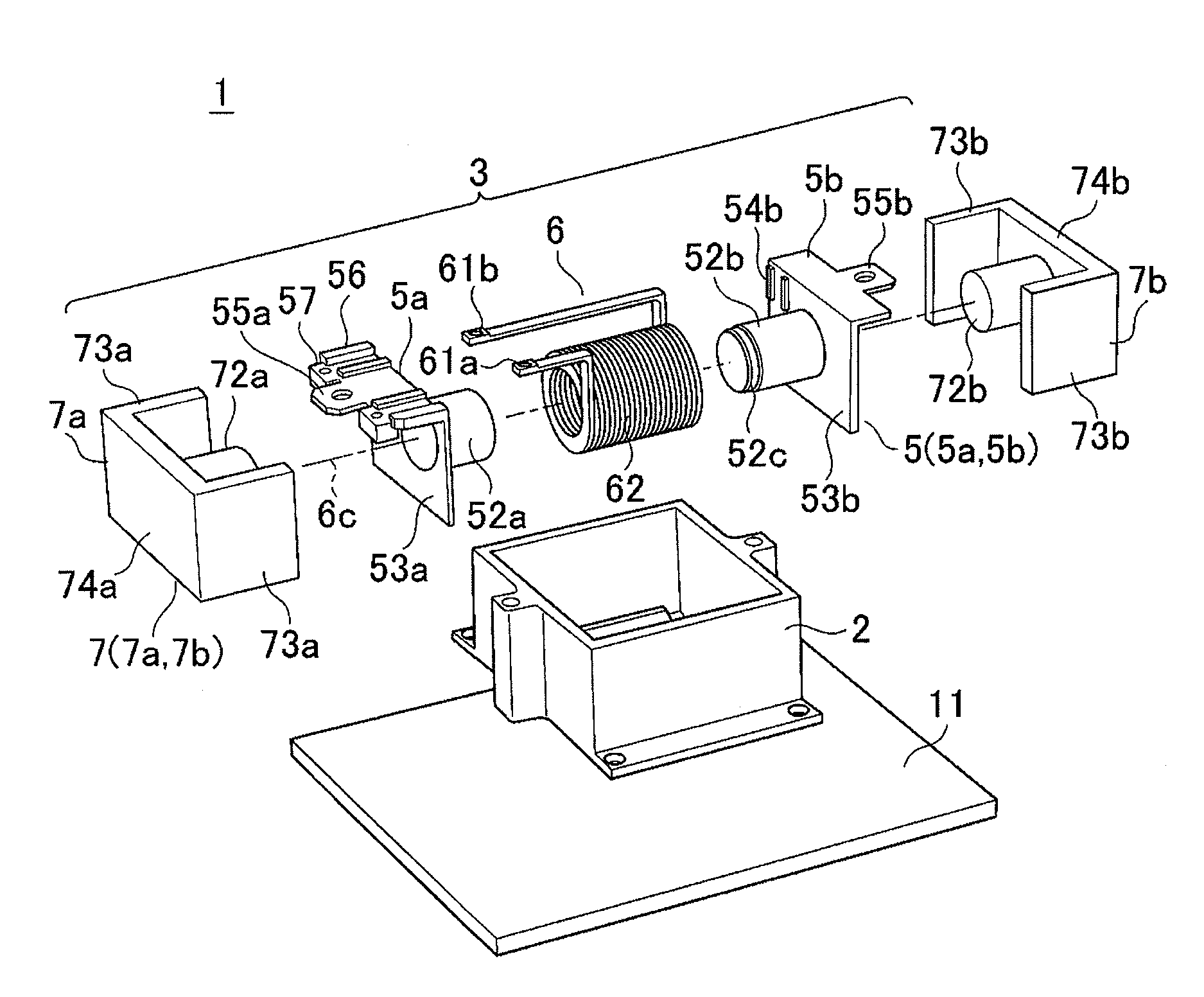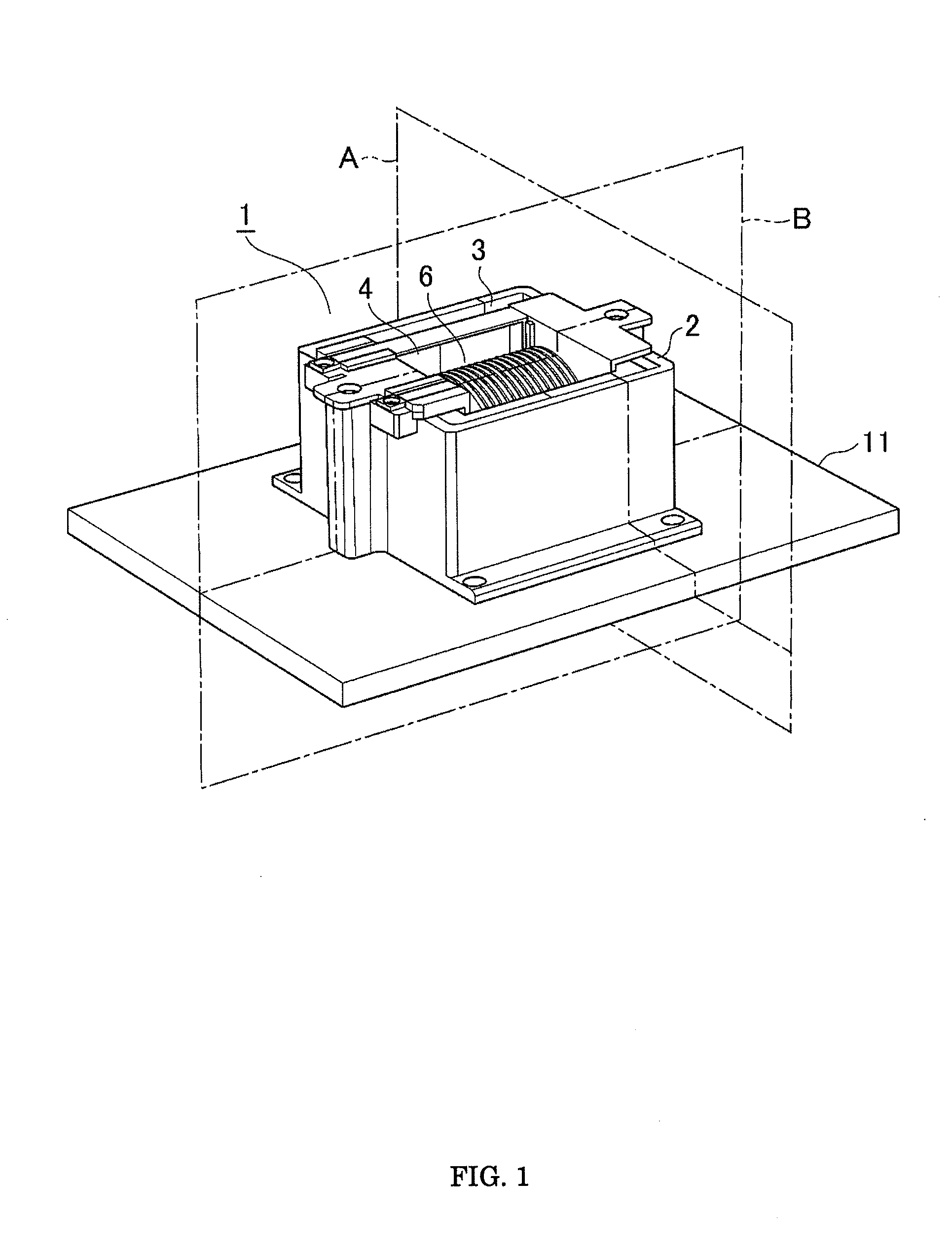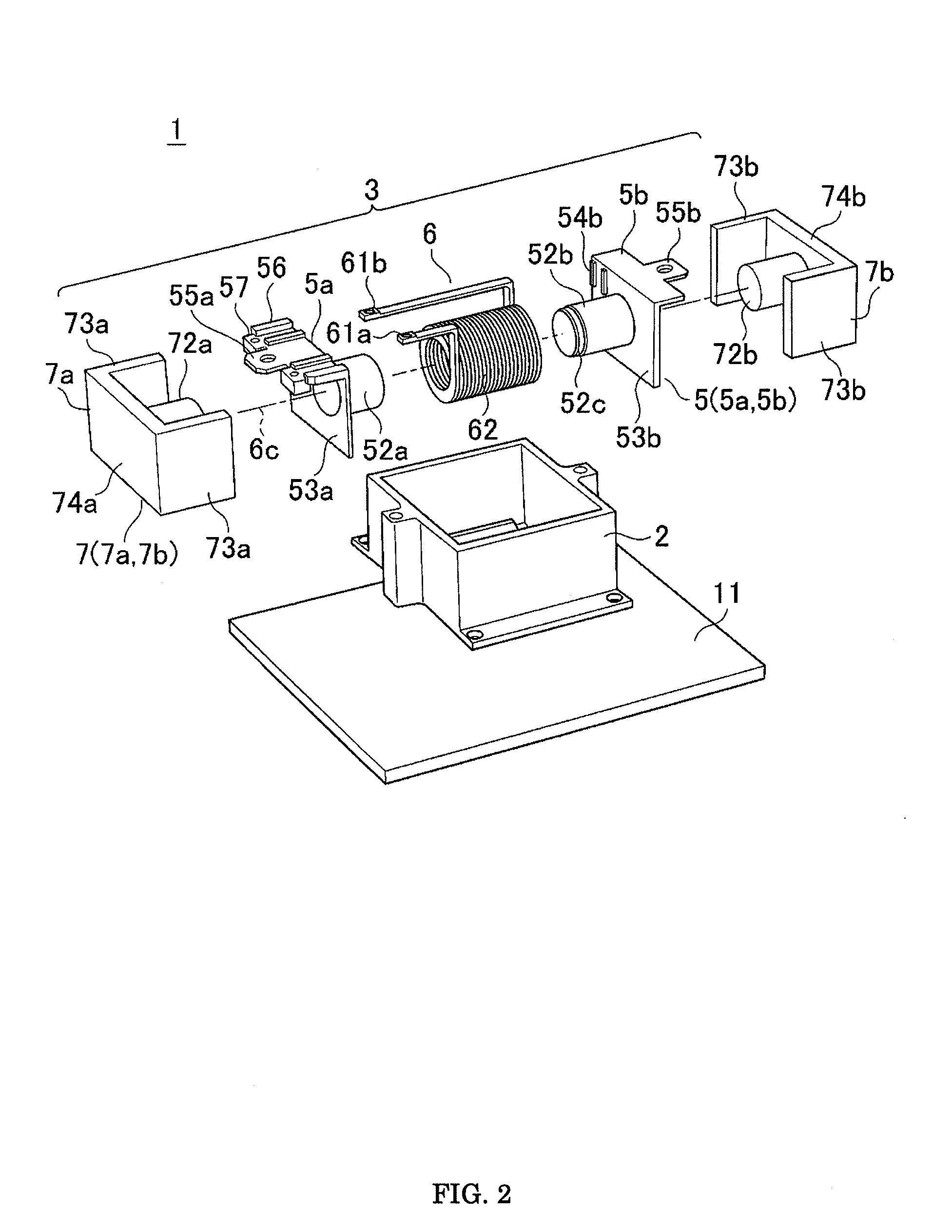Reactor
a reactor and mold resin technology, applied in the field of reactors, can solve the problems of deterioration of the insulation properties of enamel coatings, increased temperature in the interior of the reactor, and loss that the reactor body generates, so as to reduce the charge variation of mold resin, shorten the manufacturing time, and reduce the effect of cos
- Summary
- Abstract
- Description
- Claims
- Application Information
AI Technical Summary
Benefits of technology
Problems solved by technology
Method used
Image
Examples
embodiment 1
[0036]FIG. 1 is a perspective view illustrating a reactor according to a first embodiment of the invention, and FIG. 2 is an exploded perspective view illustrating exploded components of this reactor. Incidentally, the same reference numerals indicate the same or like parts throughout the drawings.
[0037]As is illustrated, a reactor 1 includes a case 2, an induction component 3 housed in this case 2 and a mold resin immersing the induction component 3 in the case 2. Furthermore, the induction component 3 is an assembly of separated insulation bobbins 5a and 5b, a coil 6 and separated core members 7a and 7b. Incidentally, the core members 7a and 7b are hereinafter simply referred to as a core.
[0038]In addition, between the underside of a wound circumference of a wire wound part 62 of the coil 6 and the inner bottom of the case 2, an insulating member 8 of a thin plate is interposed. The illustration of the insulating member 8, however, is omitted in FIG. 2.
[0039]The insulation bobbins...
embodiment 2
[0123]FIG. 8 is a perspective view illustrating an assembled state of a core 9a and a core 9b of the induction component 3 of the reactor 1 according to a second embodiment. FIG. 9, in the same manner as in FIG. 5, shows a projection view explaining the positional relationship between the interior of the case 2 and the core 9a, 9b taken from above the open face of the case 2.
[0124]In the second embodiment, the induction component 3 includes the core 9a, 9b instead of the core 7a, 7b in the first embodiment. The columnar part 72a, the outer leg part 73a and the side end part 74a of the core 7a in the first embodiment correspond to a columnar part 92a, an outer leg part 93a and a side end part 94a of the core 9a. Further, the columnar part 72b, the outer leg part 73b and the side end part 74b of the core 7b correspond to a columnar part 92b, an outer leg part 93b and a side end part 94b of the core 9b.
[0125]Moreover, the upper end face 7SU and lower end face 7SL of the outer leg part...
embodiment 3
[0146]With reference to FIG. 11, a third embodiment that is a modification of the reactor 1 according to the second embodiment is hereinafter described. FIG. 11 is a perspective view illustrating an assembled state of cores 90a and 90b of the induction component 3 of the reactor 1 according to the third embodiment of the invention.
[0147]In this third embodiment, the induction component 3 includes cores 90a, 90b instead of the cores 9a, 9b in the second embodiment. The columnar part 92a, the outer leg part 93a and the side end part 94a of the core 9a in the second embodiment correspond to a columnar part 902a, an outer leg part 903a and a side end part 904a of the core 90a, and the columnar part 92b, the outer leg part 93b and the side end part 94b of the core 9b in the second embodiment correspond to a columnar part 902b, an outer leg part 903b and a side end part 904b of the core 90b.
[0148]Furthermore, the outer leg part 93a of the core 9a, side end part 94a, outer leg part 93b of...
PUM
 Login to View More
Login to View More Abstract
Description
Claims
Application Information
 Login to View More
Login to View More - R&D
- Intellectual Property
- Life Sciences
- Materials
- Tech Scout
- Unparalleled Data Quality
- Higher Quality Content
- 60% Fewer Hallucinations
Browse by: Latest US Patents, China's latest patents, Technical Efficacy Thesaurus, Application Domain, Technology Topic, Popular Technical Reports.
© 2025 PatSnap. All rights reserved.Legal|Privacy policy|Modern Slavery Act Transparency Statement|Sitemap|About US| Contact US: help@patsnap.com



